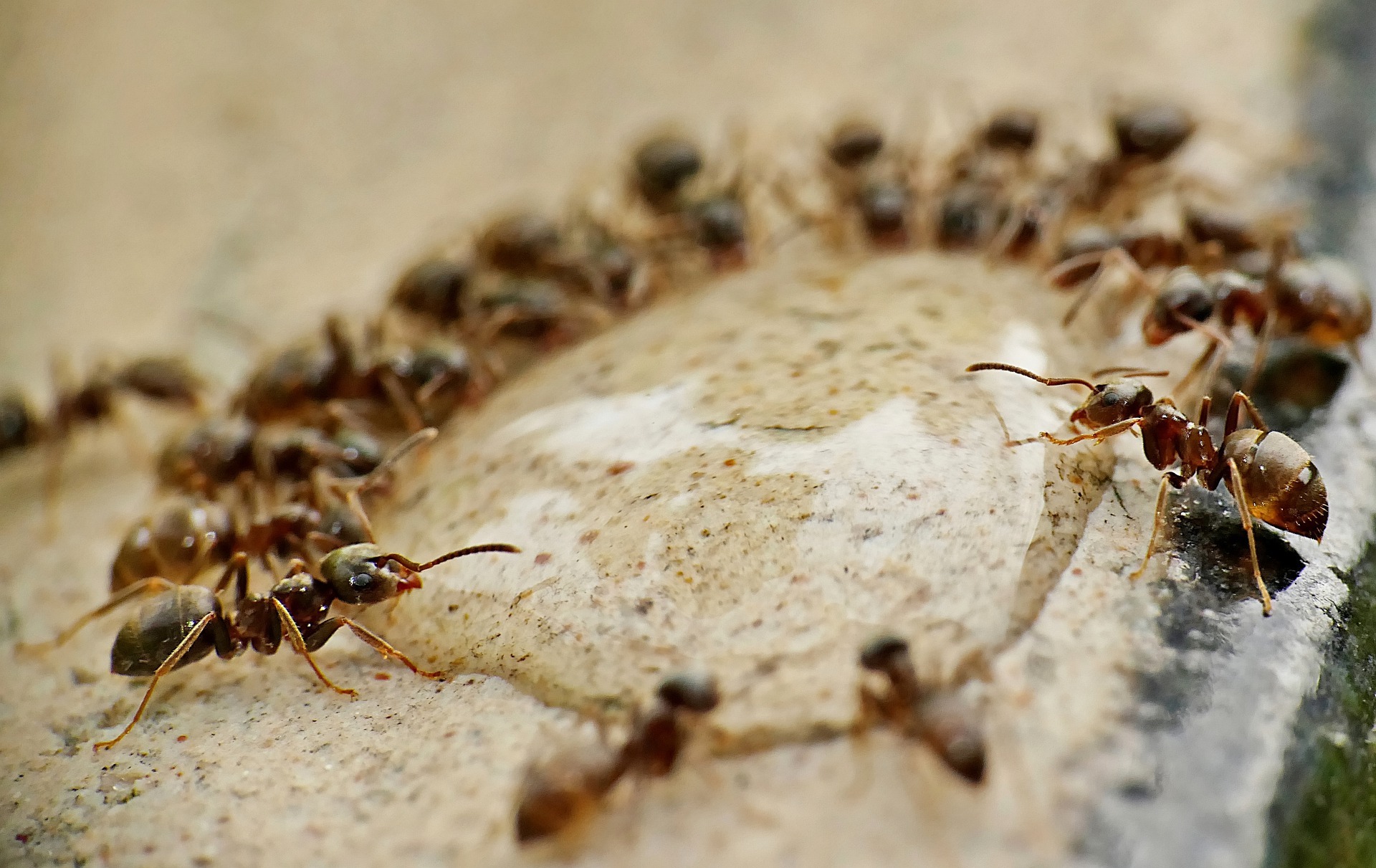Why Are Ants Attracted To Your Home?

If there’s one pest out there that no one wants to roll out the welcome mat for, it’s ants. Tiny in size but large in numbers, ant infestations in a home can quickly get out of hand without a lot of forewarning. With over 700 different species of ants in North America alone, homeowners not only have the possibility of dealing with them as a nuisance pest but some can lead to health concerns and structural damage to the home too. Why are ants attracted to your home in the first place? There are several small reasons that can lead to big ant problems. The Kness team will dive into the ‘whys’ and discuss how you can prevent ants from moving in.
Food
One of the main reasons ants encroach into a home is due to the availability of food. We’re all human, and messes involving food happen, but when those food remnants don’t get cleaned up, it creates an opportunity for pests–like ants–to move in. While ants will take advantage of nearly any source of food, they have a particular fondness for sugar. The most common food sources that draw ants inside your home are spilled drops of soft drinks or fruit juices, candy, jellies and jams, cookies, and other sweet baked goods. They also like honey and syrup and over-ripe fruits.
The simplest way of dealing with this is to make sure to clean up food messes when they happen. Keep the kitchen clean and free of crumbs and other food residues. Do the dishes frequently. Sweep and vacuum floors for food remnants as well.
Trash cans are also a food source for ants. Whether they are indoors or outdoors, keep a lid on trash receptacles. Trash cans themselves can become a source of food residue. Be sure to clean your trash cans every so often.
Water
Ants also gravitate towards water sources, and with a house, there are plenty of opportunities for ants to find some. Different areas of a home present opportunities for these little insects, from the kitchen sink to the bathtub. Even a damp basement can provide ants with some water.
Homeowners can take precautions by regularly checking water fixtures such as faucets and piping for leaks. If leaks are found, get them fixed as soon as possible. For damp areas of the home, use a dehumidifier to bring down the moisture levels.
Plants
People don’t often consider plants as an attractant for ants, but sometimes these tiny insects can infest both indoor and outdoor plants. The main reason for this is due to plants being a source of moisture and food. Plants that flower have nectar inside the blooms that provide sweet food for their colonies.
Also, plants are a haven for another insect called an aphid. These tiny insects suck out the sap from vegetation and release a substance called honeydew. Ants have a symbiotic relationship with ants, where the ants harvest the honeydew from aphids as a food source.
Solutions To Tackle Ants
Along with taking these preventative steps to ensure that you reduce the likelihood of an ant infestation, there are pest control solutions to help you.
One solution is the Kness Ants-No-More® Bait Station. This specially designed bait station attracts foraging ants to take the bait back to the colony and eliminate them at their source. Ants-No-More can be placed outdoors in gardens, the lawn, or even in potted plants.
For more information about ants and other pests, visit our Pest Control Center for more pest prevention tips.